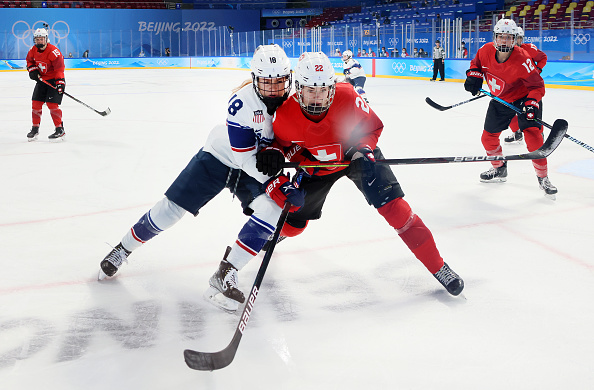With just two nations dominating the sport, should Men’s 50km skiing continue in the Olympic Games?
Debating Men’s Cross-Country Skiing – Again!
“That’s not good enough for the Olympics”
-Someone, somewhere, repeatedly
Russia, Norway. Russia, Norway. The same two teams over and over again, and it’s only to the detriment of the sport. In 2018 in Pyeongchang, Finland struck an upset with Iivo Niskanen’s gold, but the last FIVE medals were all won by Russia. Gold in 2010? Norway. Salt Lake City? Russia. Nagano? Norway.
It’s endless. It’s tedious. If sport is going to grow, other nations need to know there’s a chance they could win. So we’ll just say that maybe long-distance snow things just happen to be popular where people are good at it. *WINK*
No Fun, All Games
Okay, fine. Let’s actually talk about “that column.” You know who it is, but that doesn’t actually matter at this point. No, we’re not going to bother linking to it because you’ve read it already even if you didn’t bother to read it. If it wasn’t her, it would be someone else, probably at the same paper or one like it. There is nothing original to look at there.
The arguments are the same as they have ever been. Olympic women’s hockey is dominated by two teams because that’s where the game is the most popular and where the most opportunities are. Rink availability, cultural acceptance, and obviously a huge rivalry with the neighbours have led to Canada and the United States being powerhouses. So, the argument goes, there’s no point in having Olympic women’s hockey as one of the medal competitions if it’s just going to be dominated by two teams.
Continuing from there, the next step is the idea that it’s somehow unfair. Other nations will be discouraged, getting blown out of games by ten goals at a time. Teams won’t enjoy it, fans won’t enjoy it, so it will damage the sport, maybe. Every other nation will quit, falling into a dispirited funk as women are defunded around the globe. Or something. Really, the argument gets kinda vague here, which is bad considering it wasn’t worth pursuing in the first place.
The Logical Conclusion
Blame Canada.
Sorry, no. Meant to say “Blame Canada and the US.” Matches not involving these two nations are quite a lot more competitive. In Group B, for instance, four games finished 3-1 and one ended in a shootout. The last was veteran Japan smacking newcomer Denmark 6-2, and that’s pretty much what happens on the men’s side, too.
Group A, however, has seen far less balance. The otherwise highly-ranked Finland left arguably the best goaltender in the world behind and has suffered for it. Even so, they played the US to a 5-2 loss. Switzerland is the weak link in the group, and they managed a decent showing against the Russian team. Again, having a weaker member isn’t something men’s hockey avoids, either. But that means having 12-1 and 8-0 blowouts when the big kids – Canada and the US – get involved.
If it’s the level of competition that truly concerns critics of Olympic women’s hockey, then there is a clear solution: Ban Canada and the US from competing. The other nations have a better chance of winning, the games are closer, and… well, that’s the entire argument, isn’t it?
Step One: Don’t Be Stupid
Is it fair that the Games play with Canada and the United States included? Allow this absolutely lunatic goal rebut:
FILLIER AGAIN 🚨
The Canadian forward has 4 goals so far in the tournament and doesn't seem to be stopping 🔥 pic.twitter.com/uRCjcD1H2b
— CBC Olympics (@CBCOlympics) February 5, 2022
Yes, obviously it’s “fair” to let the US and Canada compete in the Olympics. Because hockey is popular where there’s an actual women’s league doesn’t mean they should be banned. Likewise, the idea that excluding a sport will somehow make it more competitive is simply idiotic. Exposure at the Olympic Games is worldwide, even if the time zone is lousy for North America and Europe. Why anyone would pretend otherwise is beyond us.
But that doesn’t mean improving the competition has to wait. And by “improving the competition” we don’t mean ignoring Olympics women’s hockey (and women’s hockey in general) and hoping it will go away.
Step Two: Pay Me, Sucka
The history of getting a women’s league off the ground in North America is fraught. We’re not going to be stepping into the conflict between the CWHL and the PHF (née NWHL). That’s its own thing and, yes, that conflict is part of the reason a professional women’s league has been difficult to establish.
A huge step forward is the PHF’s January announcement that, among other things, their salary cap is increasing. It’s not in the NHL’s $82+ million range but $750K per team means they are one step closer to a livable salary. The players also get a share of the teams, so as they succeed, their income increases. That’s a pretty sweet deal. The league also has a much shorter 28-game season, so while the income from playing won’t keep anyone in mansions, it isn’t too cumbersome for players to find work during downtime between seasons. Shades of football, there if you want to compare professional sports leagues.
That’s a big deal because if teams pay a reasonable wage, more people will be interested in playing. There was a clear arc of more athletes from the US looking at hockey as a viable alternative as salaries increased. It wasn’t just exposure in California and Florida and Texas, though that obviously helped.* Did we mention the PHF is also expanding next season? The PHF is also expanding next season. The best athletes in Canada were already overwhelmingly choosing hockey as their sport. In the United States, it was a very, very distant thought. A kid had to already love the game to make hockey his profession. If he could make far more in baseball or football or basketball he was more likely to try those instead.
International players who are paid enough to live in North America are more likely to come and play in North America.
Step Three: See Them? Do That
The NHL used to be 95% Canadian players. Awesome as that sounds for those of us north of the border, there is absolutely no question the skill level improved dramatically with Europeans joining the league. Anyone thinking otherwise has simply ignored the game for the past 50 years. But they didn’t come over to North America until it was worth doing so.
When the best in the world play against each other in men’s hockey, it’s overwhelmingly NHLers. That’s not a coincidence and it’s not an accident. The league builds the players. Being able to make a living – even if it’s just for half the year – by playing hockey against the best in the world? That is what’s going to give international players stars. Even outside their own time zones, they can read stats off the internet just like everyone else. They can watch video clips of their hometown champion online just like we all do.
But the Olympics builds the interest. True, international play brings true, international interest. Those folks who aren’t invested in hockey full-time – hard as it is to believe – watch when medals are involved. Winning bronze is still winning.
Taking out Olympic women’s hockey is shortsighted folly for anyone who wants to see the sport succeed. Or wants to see the sport at all.
Main Photo:






